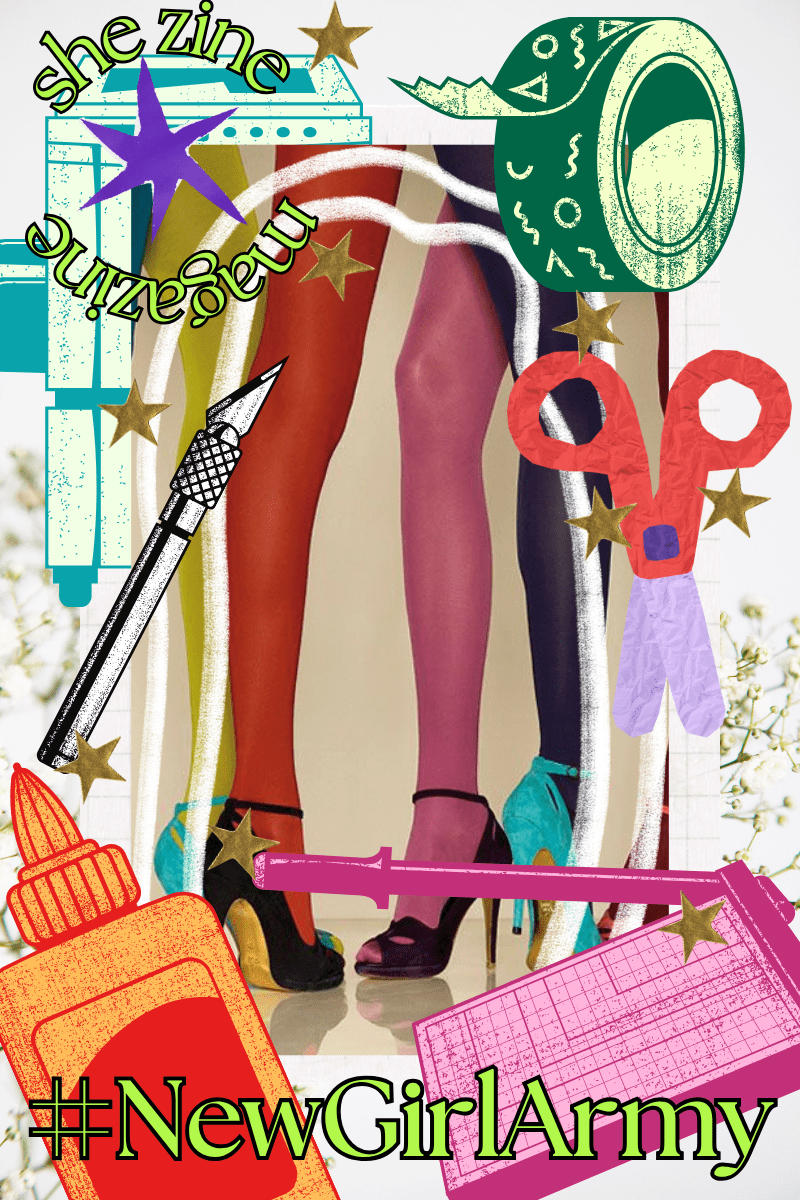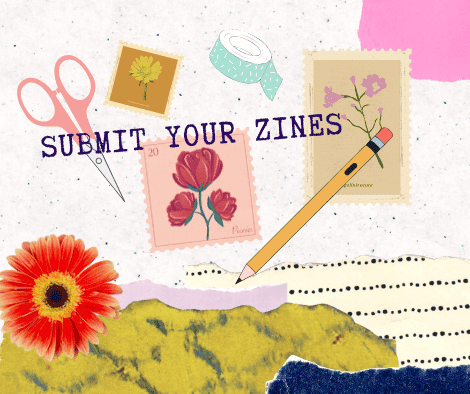Why Your Voice Matters
When you start a zine or a creative brand, it’s easy to obsess over visuals — the logo, the fonts, the layout — and forget the voice behind it. But your voice is the invisible design element that ties it all together. It’s the thing that makes people read a paragraph and instantly know it’s you.
Voice is not just style; it’s point of view. It’s attitude, rhythm, honesty, and energy. For zinemakers and indie brands, it’s also your politics and your play — the combination of what you stand for and how you say it.
Think of it like tone colour in music. Every instrument can play the same melody, but a fuzzed-out bass guitar and a clear piano will hit totally differently. The same is true of your writing.
The Myth of a Single Voice
You don’t need to have one static voice. You can have many — as long as each version feels authentic.
Your zine voice might sound like a letter to a friend. Your brand voice might need to be clearer and more structured for web copy. Your editorial voice for essays might pull from journalism, while your newsletter voice might be looser, more human, more “grab a coffee with me and let’s talk about this weird thing I noticed.”
The goal isn’t to sound the same everywhere; it’s to sound true everywhere.
| Form | Tone/Voice Style | Example Context |
|---|---|---|
| Essay | Reflective, crafted, opinionated | “Why DIY culture still matters in 2025” |
| Conversational Post | Casual, confessional, witty | “Okay, so I accidentally started a brand last week.” |
| Letter-Style | Warm, direct, slightly vulnerable | “Dear Reader, I’ve been thinking about burnout lately…” |
| Manifesto | Bold, declarative, urgent | “We refuse to shrink our voices for algorithms.” |
| How-To / Tutorial | Clear, supportive, a touch of humour | “Grab your glue stick. Things are about to get delightfully messy.” |
| Press / About Page | Confident, grounded, concise | “She Zine Mag is a feminist media platform for creative rebellion.” |
You can flex your tone depending on where it lives — just like you dress differently for a market pop-up than a media interview. You’re still you, just styled for the situation.
Exercises to Discover Your Voice
Let’s get practical. Below are journaling and writing exercises to help you find (or re-find) your authentic tone.
1. Write Three Ways
Pick one topic — maybe “why I make art” or “what I believe in” — and write it:
- As if you’re ranting to your best friend.
- As if you’re writing an essay for a respected magazine.
- As if you’re writing a love letter to a stranger who might need to hear it.
Then read them out loud. Where does your voice feel most natural? Where does it sound like you’re performing?
2. Voice Collage
Cut and paste lines from people whose tone you admire — zinesters, writers, poets, even tweets. Mix them with your own words. What kinds of phrases do you gravitate toward? What rhythm feels most like you?
Highlight any repeated words or cadences. That’s your fingerprint.
3. Brand Voice Mad Lib
Fill in the blanks:
- “My brand sounds like _______ meets _______.”
- “If my zine were a person, she’d _______.”
- “We’re the kind of brand that would never _______.”
- “We believe _______ is worth fighting for.”
- “We talk like we’re _______ (at a kitchen table / on a protest line / in a classroom / on the bus).”
This helps you build a toneboard — not visual, but linguistic. It can guide how you write everything from captions to calls to action.
4. Rewrite Something Ten Times
Take your About section or bio and rewrite it ten different ways:
- One with zero adjectives.
- One full of slang.
- One like you’re writing a poem.
- One like you’re pitching a reality show.
- One like a breakup note.
- One in bullet points.
- One from your brand’s “mascot” or alter ego.
- One stripped to only verbs and nouns.
- One that makes you laugh.
- One that makes you tear up.
Now Frankenstein the best parts together.
5. Journal in Character
Write a one-page journal entry as your zine or brand itself. What would it say about its mood today? What’s pissing it off? What’s turning it on? What’s it excited to make? This gets you out of “marketing mode” and into emotional truth.
Finding the Voice for Different Mediums
✦ Social Media
Fast, punchy, playful. Talk like you text.
People scroll — they don’t study — so lead with personality, not perfection.
Example:
“New issue’s out! It’s messy, loud, and 100% made with love (and possibly glue fumes).”
✦ Website Copy
This is your elevator pitch. Make every sentence earn its space.
Example:
“She Zine Mag is a creative media platform celebrating DIY feminism, craft, and culture. We publish smart, messy, heartfelt stories that make you want to make something.”
✦ Editorial Essays
Here’s where your thoughtfulness can shine. Let yourself write long sentences, explore nuance, and leave room for complexity. You can sound like a friend and a thinker.
Example:
“There’s a rhythm to burnout. The crash, the quiet, the slow return. Maybe the fix isn’t balance — maybe it’s a better beat.”
✦ Email Newsletters
This is your living room. Invite readers in, pour a coffee, and talk.
You can blend updates, musings, behind-the-scenes, and gentle calls to action.
Example:
“This week, I stitched my brain back together one crochet loop at a time. Also, we launched something new. Come peek?”
✦ Zines
The beauty of zines is you can throw all the rules out. Typewriter text, doodles, manifesto scribbles — all of it is voice.
If your writing sounds like it could only exist on your pages, that’s success.
The Voice Spectrum: From Polished to Punk
You can think of tone on a sliding scale:
| Tone | When to Use It | Example |
|---|---|---|
| Professional | Grant proposals, media kits, press | “We are an independent feminist publisher based in Toronto, Canada.” |
| Warm & Conversational | Blog posts, newsletters, about pages | “We make things for people who can’t sit still creatively.” |
| Punk & Personal | Zines, manifestos, social rants | “We don’t wait for permission. We make the thing and scream about it later.” |
You can move between them — even in one project — as long as you’re intentional. For example, She Zine Mag essays might live in the warm-to-punk range, while AXO&Co’s service descriptions might lean professional with personality.
Write Like a Human (Not a Brand)
Even if you’re writing as a brand, your readers are humans. They want to feel something.
Use contractions. Ask questions. Swear (strategically). Tell the truth about what’s messy or hard.
Here’s a quick checklist for keeping it human:
- Does this sound like something I’d actually say out loud?
- Can I replace jargon with a simpler word?
- Is there a moment of real feeling here?
- Would my best friend roll her eyes at this sentence?
If the answer is “yes,” rewrite it until it passes the vibe check.
Building a Voice Guide
Once you’ve done the exercises, document your findings in a quick “Voice Guide” for your zine or brand. Include:
- Keywords: 5–7 words that describe your tone (e.g. bold, crafty, irreverent, kind, feminist, smart, fun)
- Do Say / Don’t Say: Words you love vs. words that make you cringe.
- Sample Sentences: Real lines from your writing that feel “right.”
- Voice Shifts: How tone changes for different formats (essays vs. captions vs. newsletters)
- Inspiration Sources: Writers, brands, or zines whose voice inspires yours.
You can refine this over time — your voice evolves just like your handwriting does.
Final Thought: Voice Is a Practice, Not a Persona
Finding your voice isn’t about inventing a character. It’s about peeling away everything that doesn’t sound like you.
You don’t find it once and keep it forever — you tune it, like a guitar. Sometimes you’ll be loud and chaotic. Sometimes you’ll be quiet and tender. That’s the whole point.
Writing Prompts to Keep You in Tune
- What would your teenage self write if she could hijack your keyboard right now?
- How would your brand talk if it were a mixtape instead of a website?
- What sentence would you tattoo on your arm if it could define your creative mission?
- Who are you writing for — and what do they need to hear today?
→ Subscribe to The Edit
→ Submit Your Work
→ Follow @shezinemagazine

AXO (she/her) is a multidisciplinary creator, editor, and builder of feminist media ecosystems based in Toronto. She is the founder of She Zine Mag, Side Project Distro, BBLGM Club, and several other projects under the AXO&Co umbrella — each rooted in DIY culture, creative rebellion, and community care. Her work explores the intersection of craft, technology, and consciousness, with an emphasis on handmade ethics, neurodivergent creativity, and the politics of making. She is an advocate for accessible creativity and the power of small-scale cultural production to spark social change. Her practice merges punk, print, and digital media while refusing to separate the emotional from the practical. Above all, her work invites others to build creative lives that are thoughtful, defiant, and deeply handmade.

























